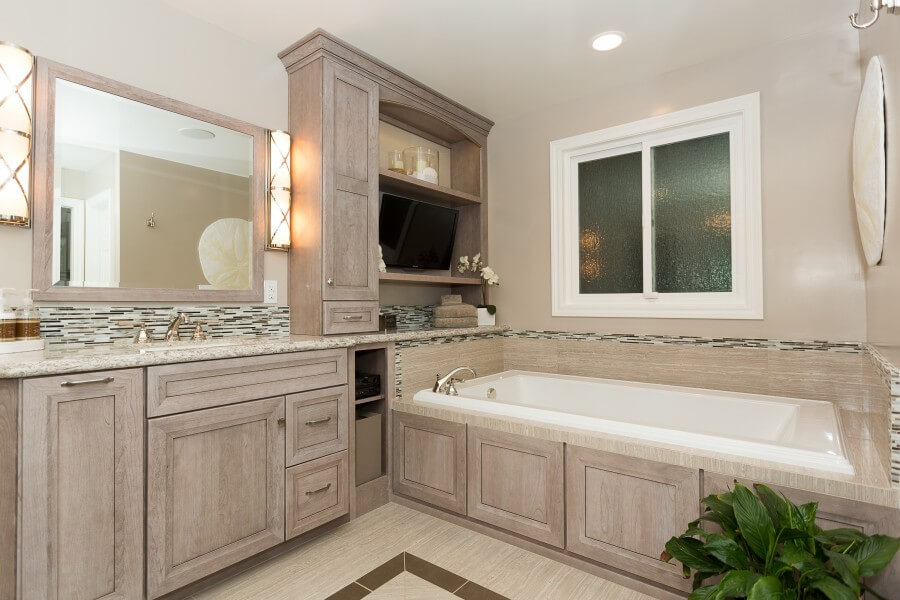We are all learning that becoming an educated buyer not only helps us get the right products, but get them at the right price. Most consumers come to us not knowing what is involved in having a contractor remodel their bathroom, and because of that, they don’t have a realistic approach to how much it should cost.
To begin, let’s discuss a common misconception that homeowners have when having a bathroom remodeled. You may think that you’re only paying for materials and the labor to get the job done, but the costs to a bathroom contractor when he signs a job is much more complex than you might think.
 First, the type of contractor that you want to work with will have some back-end overhead expenses: insurance, legal services, accounting, administration, project management, truck maintenance, office supplies, etc. People don’t tend to think about these costs when looking at the final price of a bathroom remodeling project, but it can add up.
First, the type of contractor that you want to work with will have some back-end overhead expenses: insurance, legal services, accounting, administration, project management, truck maintenance, office supplies, etc. People don’t tend to think about these costs when looking at the final price of a bathroom remodeling project, but it can add up.
Next, the contractor has to pay for the front end, like materials and the labor of employees. Labor cost is different for each specialty trade and varies based on the scope of work.
Then add the cost of the materials you have chosen. As you set your budget for a bathroom remodel, keep in mind that the National Kitchen & Bath Association recommends spending 5 to 10 percent of your home’s value on a bathroom remodeling project. If you have a $700,000 house, this means you should plan to spend $35,000 to $70,000 on your master bathroom.
If you have a significantly higher-valued home, such as a $1.5 million, it doesn’t mean you should spend $150,000 on a single bathroom remodel, except in rare circumstances where you order rare products. Spending $75,000 to remodel a bath in a high-value home would still be appropriate, however, since larger homes generally have larger bathrooms where luxury fittings are more, well, fitting.
For homes that are valued at less than $200,000, you should spend about $10,000 for a quality bathroom remodel. In most circumstances, anything below that will include linoleum floors, a leaky bathtub, and other materials that you won’t be happy with. With a budget under $10,000, you’ll most likely end up spending more to get the job done right the second time.
Here are some tips to help you keep costs down:
– Don’t have the contractor relocate any fixtures, like toilets and vanities, unless you need to. Repositioning items in the bathroom takes a good deal of extra time and material. You can easily save a few thousand dollars in just by keeping things put.
– Opt for simple tile designs instead of inlays and other more complex layouts. Not only do simple designs take less time to install, but you’ll often spend considerably less on tile, as well. Keep in mind, however, that your bathroom should be a relaxing and pleasant environment with a little panache, not something that resembles a hospital commode.
– Do the painting yourself. Painting is very time consuming, and most people can do this themselves. This can save you a great deal in labor charges, and can also be fulfilling.
Just like other purchases, you get what you pay for in construction. Remember that the bathroom is one of the most abused rooms in your home, exposed to heat, cold, constant use, steam, mildew, mold, and a variety of other causes for deterioration. Buying low quality materials won’t pay off in the long run. Watch for shortcuts such as exposed particle board and non-painted or sealed wood. Longer lasting materials will ultimately be more cost-effective.
We hope this information is useful to all of you who look to hire a contractor to remodel a bathroom. Just make sure to ask questions and do your homework and trust who you decide to work with.